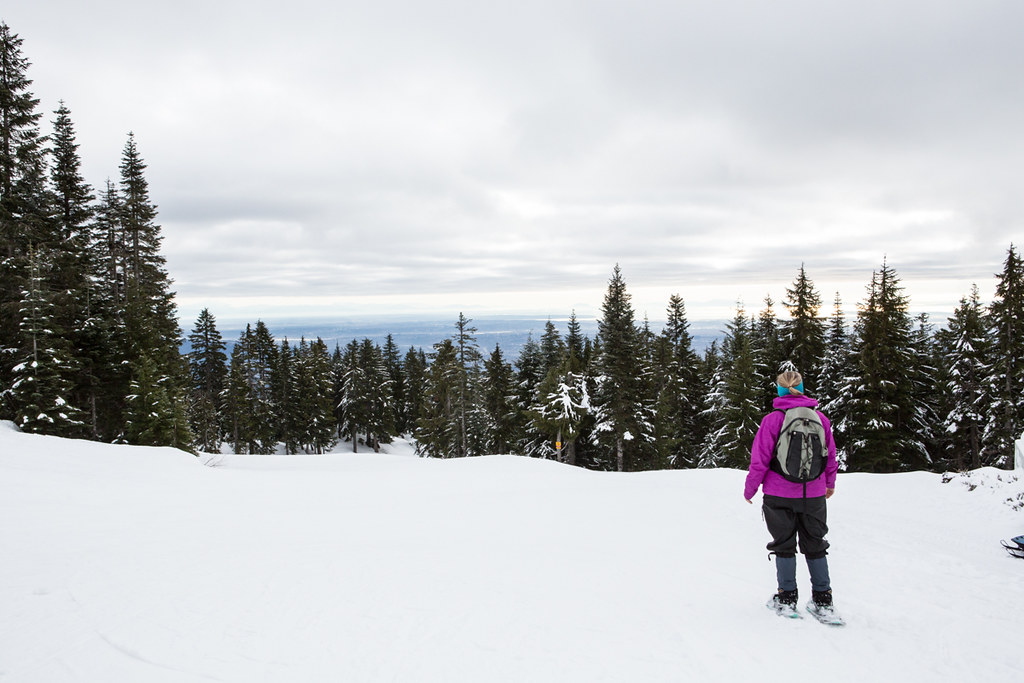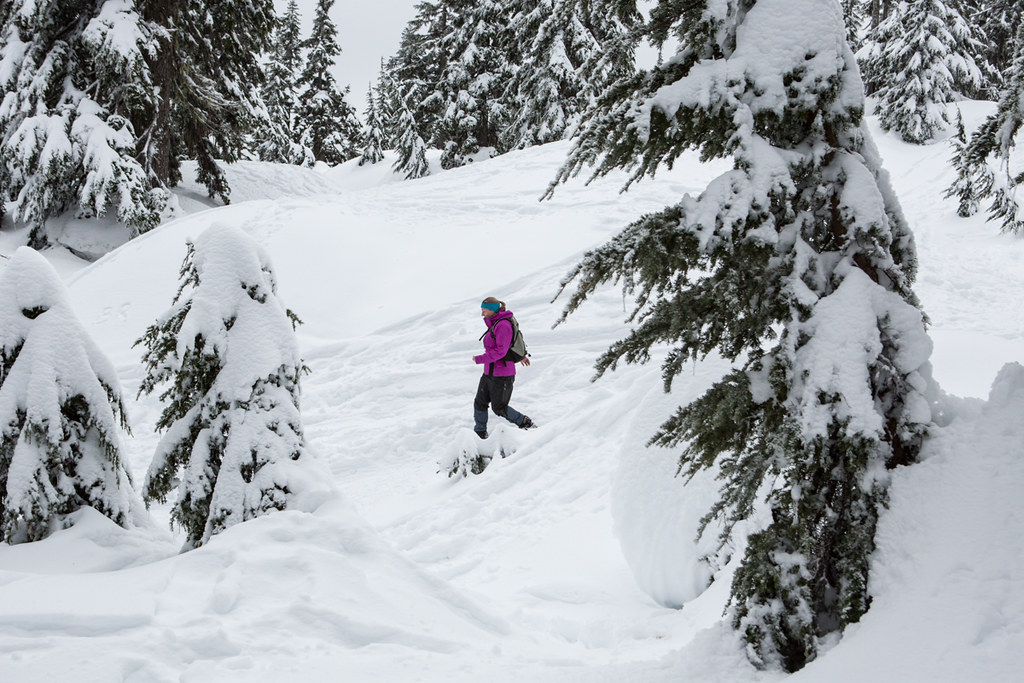One winter activity that I enjoy is snowshoeing. It's affordable as we own our own snowshoes and use the free trails. Even if you end up renting, it is still a great way to get the alpine experience without spending a lot of money. It is also easy for people of all ages and abilities as the mountains have a variety of terrain in their snowshoe trails. I've been in a number of weather conditions and often you don't really know what to expect so these would be my recommendations for a safe and comfortable time:
1. Have a plan and let someone know where you are going. Look at a map ahead of time and see how far it is and how long it is estimated to take. Let someone know what you are planning on doing and when you expect to return.
2. Layers. You'll likely start out quite cool but warm up once you start moving. I usually wear a long sleeved shirt and waterproof winter coat on top. For my lower half I wear leggings and rain pants (and gators).
3. Gloves and a hat/ear warmer are key. You can always take them off if need be. I love my MEC head warmer because it allows for some ventilation so I don't overheat. Gary would say sunglasses too as the sun can be so bright reflected off of the snow, I just find that they fog up.
4. Rain pants. Not only do they keep your dry but allow you to slide down steeper hills. Gary prefers long johns with hiking shorts over top.
5. Gators. These are not a "must have" item but they keep your feet dry by preventing snow from getting into your boots/shoes.
6. Good footwear. I wear my winter hiking boots and Gary wears light hikers. Whatever you wear, make sure they are well fitted, comfortable and waterproof. I also prefer wearing hiking socks.
7. Dry socks, shoes, and shirt for afterward. Even if you manage to keep the snow out, you may be pretty sweaty.
8. Poles help if you are making big elevation changes. I find this helps me more the older I get but I don't always take them. It's difficult having poles and taking photos at the same time.
9. Backpack with snacks, water, map, phone and headlamp. Make sure that your phone is in a waterproof bag–a Ziploc works totally fine.You can often pick up a map at the mountain. Be aware that it is cold on the mountain and your cell phone battery may die quickly. Keep yourself hydrated and stop to enjoy a snack!
10. Check the weather before going up. If it's above zero Celsius, you'll warm up quickly. Make sure you know when the sun will be setting and whether or not you are prepared to be out there in the dark.
If skiing or boarding isn't your thing, maybe snowshoeing is! Let me know if I forgot anything and happy exploring.
Love,
Louise.jpg)



No comments:
Post a Comment